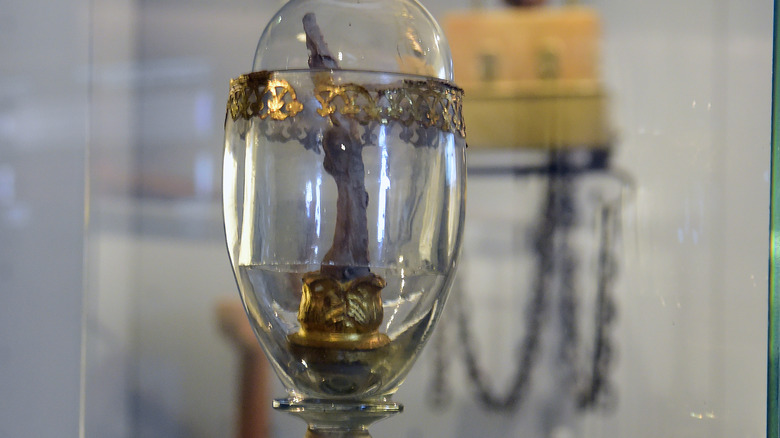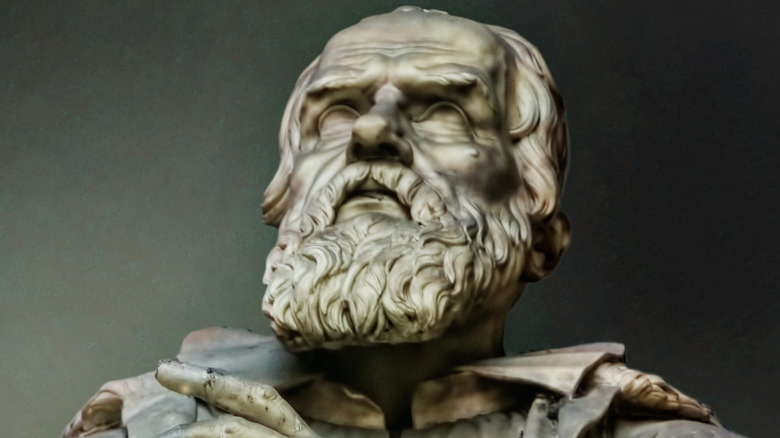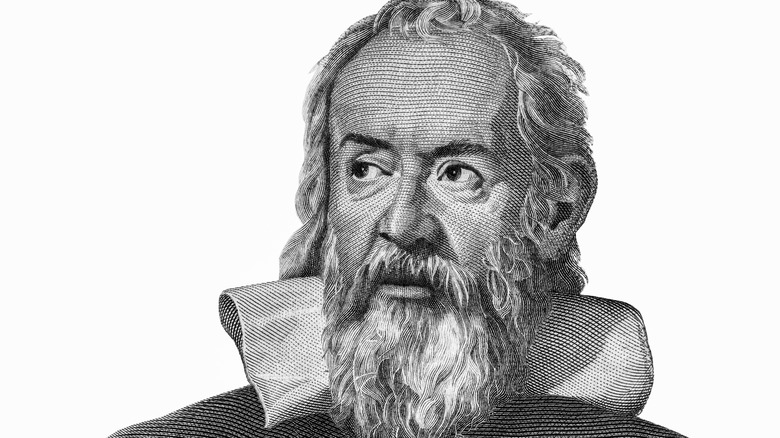These Body Parts Of Galileo Galilei Are On Spectacle Today At A Museum
It only seems fitting that a man considered the "father of modern science," Italian astronomer, philosopher and mathematician Galileo Galilei, would have a museum dedicated in his honor — and he does. The Galileo Museum in Florence, Italy, is filled with an important collection of scientific instruments, from the Medici and Lorraine eras to more recent years, and includes Galileo's original equipment, such as thermometers, microscopes and meteorological equipment (via Museo Galileo). Also nestled among these priceless scientific treasures is a shocking oddity: Three fingers from Galileo's right hand and a tooth are on display in simple, egg-shaped glass jars inside a display case at the museum (via Museo Galileo).
Galileo's thumb, index finger, and a tooth joined his middle finger, which was already on display at the museum, nearly a century after their rediscovery in 2009. The body parts had disappeared some time after 1905, according to a 2009 report by CNN, but were bought at auction almost 100 years later by an anonymous person who suspected what they were and brought them to the Galileo Museum.
Parts taken from Galileo's body
The digits, the last tooth in Galileo's mouth, and a piece of his vertebra were detached from his body in 1737, almost 100 years after his death in 1642, by Anton Francesco Gori when the remains of the famed scientist were moved from a closet next to the chapel of Saints Cosmas and Damian to a mausoleum in the main church of Santa Croce in Florence (via NASA). One finger — the right middle — was acquired by the librarian of the Biblioteca Laurenziana, according to NASA, and was on display in the library for a long time before it was acquired by the Galileo Museum in Florence, formerly the Museum of the History of Science.
Galileo's other two fingers and a tooth were passed down through generations of the Gori family before they were lost in the early 1900s. What happened to the piece of vertebra taken from spine of the inventor of the telescope is a little murkier, although it is now housed at the University of Padua, where Galileo taught from 1592 to 1610 (via History).
Galileo's fingers removed as relics
Making off with skeletal pieces of a corpse, albeit a famous one, is just not something most modern people can understand. Aside from the morbidity of the act itself, it's hard to imagine a finger or toe displayed as an artifact on a living room shelf. But removing body parts, or relics, from those considered saints was a common practice of the Catholic Church, and those taking Galileo's fingers, tooth and vertebra would have believed the same. The longtime director of the Galileo Museum, Paolo Galluzi, told CNN that the fingers taken were the ones the scientist would have used to hold a pen, and that those who removed parts of his body essentially considered him a secular saint in the same way the church revered its saints.
"Exactly as it was practiced with saints of religion, so with saints of science," Galuzzi said. "He was a hero and a martyr, keeping alive freedom of thought and freedom of research."


